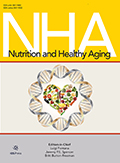Authors: Alkhudaydi, Hind Mesfer S. | Spencer, Jeremy P.E.
Article Type:
Research Article
Abstract:
BACKGROUND: Type 2 Diabetes Mellitus (T2DM) is among the most frequent chronic diseases in virtually all countries, posing a global health threat. Therefore, Preventive interventions are critical for reducing the enormous burden of diabetes. Flavanols may assist people with metabolic disorders to maintain glucose homeostasis by inhibiting digestive enzymes and glucose transporters. Green Tea (GT) and cocoa have gotten much attention since their flavanols are high. OBJECTIVES: To investigate the effects of polyphenols from GT and cocoa (>4 weeks) on reducing the incidence of complications and improving glycaemic control and insulin sensitivity in adult patients with T2DM through
…outcomes Fasting Blood Glucose (FBG), Fasting Blood Insulin (FBI), Haemoglobin A1c (HbA1c) and Homeostatic Model Assessment of Insulin Resistance (HOMA-IR). METHODOLOGY: An electronic research programme was applied, using different databases (including Web of Science, PubMed/Medline, Scopus, and Cochrane Reviews) to find studies that have evaluated the impact of polyphenols from GT and cocoa on reducing the incidence of complications and improving glycaemic control and insulin sensitivity in adult patients with T2DM. Articles published between 2005 and 2021 in English were selected. RESULTS: 15 and 7 studies involved 738 participants on GT (348 male/390 female). In contrast, the ones focused on cocoa had 331 participants (83 male/ 248 female) with T2DM aged 18–65 years, and a BMI range of 25–34.9 kg/m2 was identified and included in the present review. 43 and 27% of studies were low-risk bias in cocoa and GT, respectively. The results of the meta-analysis showed no significant difference in FBG levels following GT and cocoa consumption compared to the control group (SMD: –0.08; 95% CI: –0.43 to 0.28; P = 0.68 and SMD: –0.65; 95% CI, –1.40 to 0.10; P = 0.09, respectively). Also, the results showed no significant difference for GT and cocoa intervention (SMD: 0.18; 95% CI: –0.27 to 0.64; P = 0.43 and SMD: –0.80; 95% CI: –1.92 to 0.31; P = 0.16, respectively). In addition, the results of the HbA1c analysis showed no significant reduction after GT and cocoa consumption (SMD: –0.41; 95% CI: –0.85 to 0.03; P = 0.07 and SMD, –0.37; 95% CI, –0.77 to 0.04; P = 0.08, respectively). There was no evidence that GT and cocoa interventions effectively improved HOMA-IR (SMD: 0.02; 95% CI: –0.16 to 0.20; P = 0.80 and SMD, –1.65; 95% CI, –3.77 to 0.46; P = 0.13, respectively CONCLUSION: The evidence shows that the short-term administration of cocoa and GT did not significantly reduce the FBG, FBI, HbA1c, and HOMA-IR levels in adult patients with T2DM.
Show more
Keywords: Cocoa, green tea, dark chocolate, catechin, glycaemic control, diabetic patients, meta-analysis
DOI: 10.3233/NHA-230204
Citation: Nutrition and Healthy Aging,
vol. 9, no. 1, pp. 17-36, 2024





